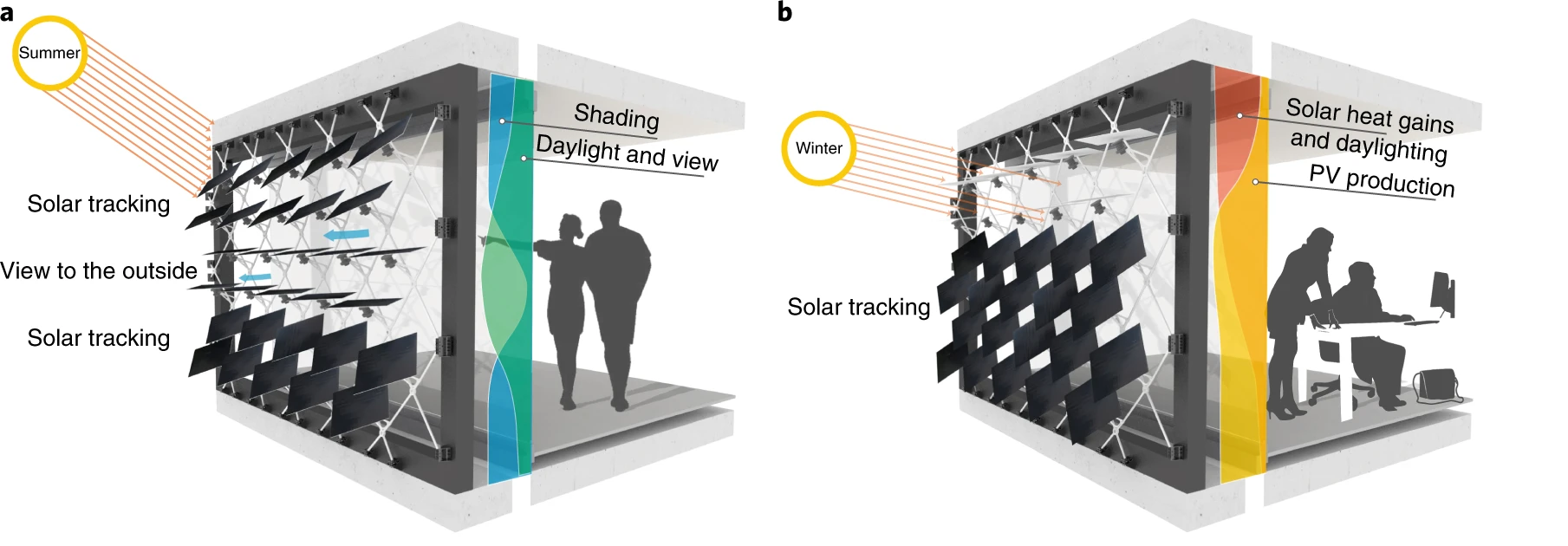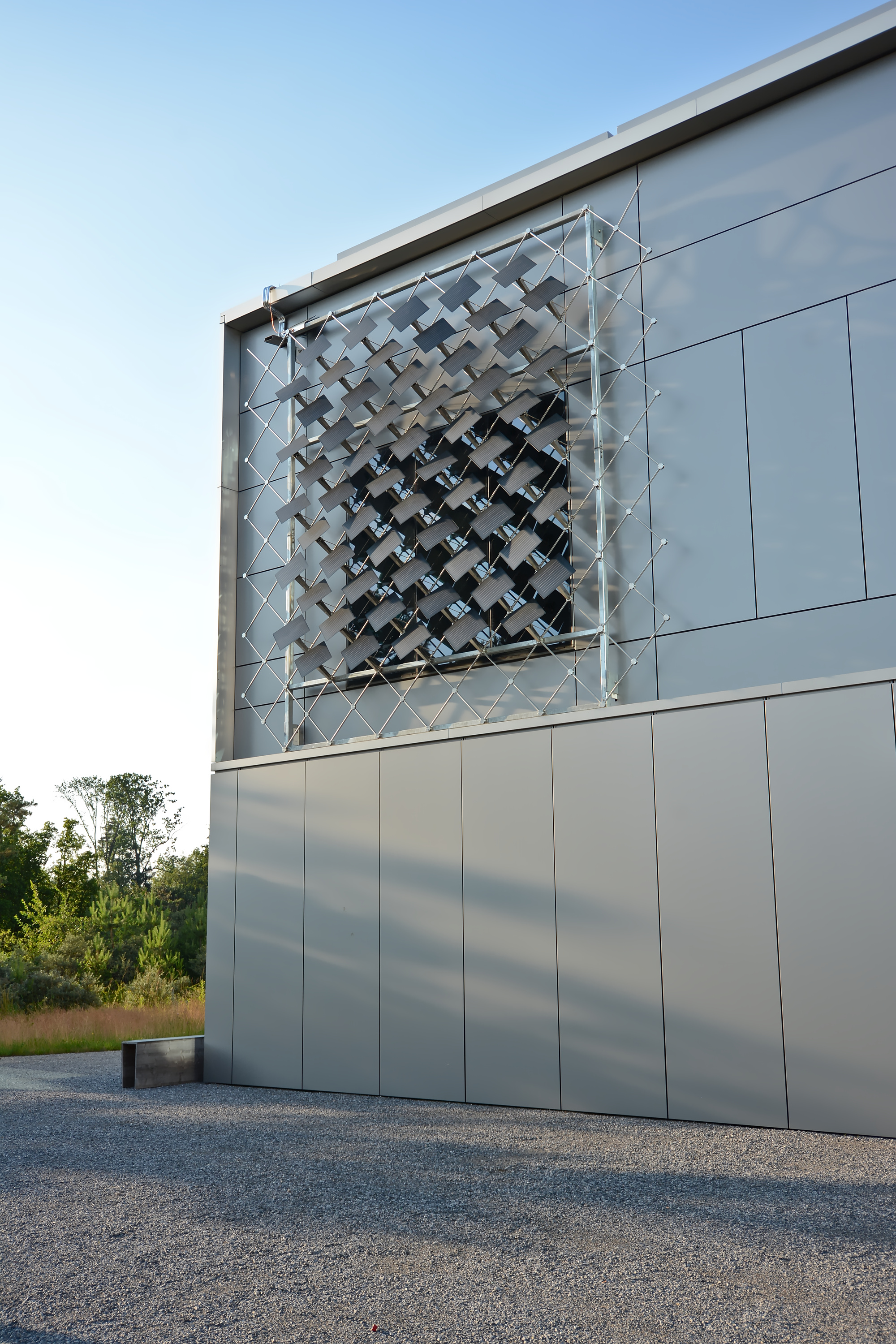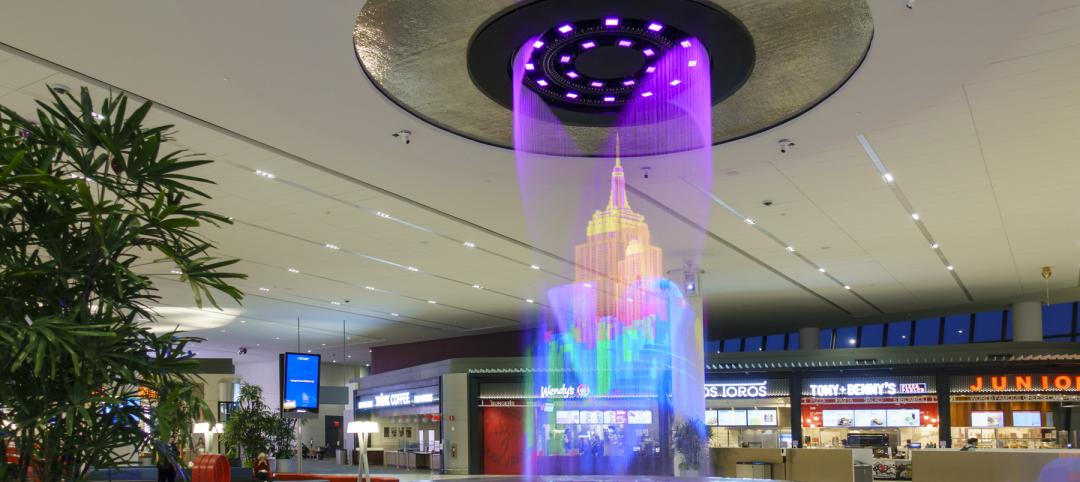A Swiss startup, Zurich Soft Robotics, has devised a photovoltaic façade that tracks and moves with the sun. The company calls Solskin the first commercially available intelligent climate-adaptive building envelope.
Developed by architects and robotics researchers at Swiss research university ETH Zurich, the Solskin hardware comprises adjustable photovoltaic modules that serve a dual purpose: producing renewable electricity while also shading the interior.
The PV modules are mounted on a modular structure that includes all the wiring. The dynamic, lightweight system can be used on both new buildings and façade renovations. Through testing, the team also has confirmed the system’s extreme weather resistance.
When placed in front of a building’s windows, Solskin can reduce building energy consumption by up to 80%, according to ETH research. The solar-tracking modules produce up to 40% more electricity than comparable façade systems. In some cases, such as a south-facing glazed office space in Zurich, the Solskin system can cover the building’s entire energy consumption.
Zurich Soft Robotics’ recent innovation, Solskin AI, makes the system even smarter by leveraging predictive self-learning algorithms. With Solskin AI, the system can control the position of the solar modules in real time—achieving optimal energy efficiency and ensuring the comfort of occupants behind the Solskin facades. The use of AI helps address user preferences, weather conditions, and energy consumption.
Solskin’s moving elements constantly adapt to the environment, leading to increased comfort and reduced energy consumption—which will become increasingly critical with climate change.
All Solskin systems will have continuous AI updates, ensuring the energy-efficient, intelligent building envelopes are always up to date, with a focus on longevity and sustainability.

Related Stories
Sponsored | BD+C University Course | May 3, 2022
For glass openings, how big is too big?
Advances in glazing materials and glass building systems offer a seemingly unlimited horizon for not only glass performance, but also for the size and extent of these light, transparent forms. Both for enclosures and for indoor environments, novel products and assemblies allow for more glass and less opaque structure—often in places that previously limited their use.
Airports | Apr 4, 2022
Dominican Republic airport expansion will add mixed-use features
The recently revealed design concept for the expansion of Santiago International Airport in the Dominican Republic includes a transformation of the current building into a mixed-use space that features an office park, business center, and hotel.
Codes and Standards | Mar 4, 2022
FAA offers $1 billion in grants for airport terminal and tower projects
The Federal Aviation Administration (FAA) is now accepting applications for about $1 billion in grants for airport projects during fiscal year 2022.
Resiliency | Feb 15, 2022
Design strategies for resilient buildings
LEO A DALY's National Director of Engineering Kim Cowman takes a building-level look at resilient design.
Sponsored | Resiliency | Jan 24, 2022
Blast Hazard Mitigation: Building Openings for Greater Safety and Security
Coronavirus | Jan 20, 2022
Advances and challenges in improving indoor air quality in commercial buildings
Michael Dreidger, CEO of IAQ tech startup Airsset speaks with BD+C's John Caulfield about how building owners and property managers can improve their buildings' air quality.
Giants 400 | Oct 22, 2021
2021 Airport Sector Giants: Top architecture, engineering, and construction firms in the U.S. airport facilities sector
AECOM, Hensel Phelps, PGAL, and Gensler top BD+C's rankings of the nation's largest airport sector architecture, engineering, and construction firms, as reported in the 2021 Giants 400 Report.
| Oct 14, 2021
The future of mass timber construction, with Swinerton's Timberlab
In this exclusive for HorizonTV, BD+C's John Caulfield sat down with three Timberlab leaders to discuss the launch of the firm and what factors will lead to greater mass timber demand.
Giants 400 | Aug 30, 2021
2021 Giants 400 Report: Ranking the largest architecture, engineering, and construction firms in the U.S.
The 2021 Giants 400 Report includes more than 130 rankings across 25 building sectors and specialty categories.
Resiliency | Aug 19, 2021
White paper outlines cost-effective flood protection approaches for building owners
A new white paper from Walter P Moore offers an in-depth review of the flood protection process and proven approaches.

















